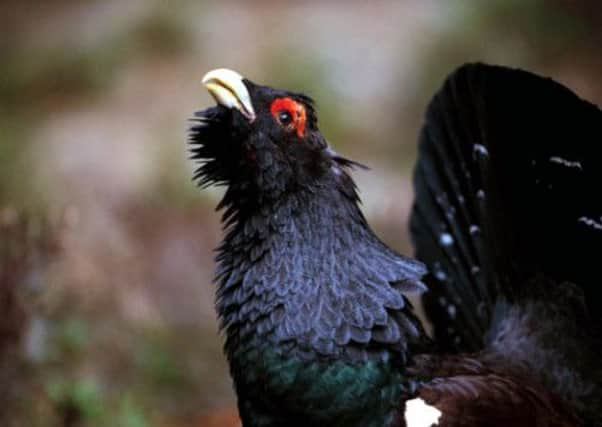‘As few as five’ capercaillies left in Trossachs


Researchers studying the endangered species believe there may be only five adult birds left in the Trossachs and Argyll, their most southerly home in Scotland.
Although individual birds were spotted last year around the Loch Lomond islands, where a cluster of small populations had been found, detailed searches have uncovered no evidence of breeding in the past two seasons and numbers have been declining steadily in recent decades.
Advertisement
Hide AdAdvertisement
Hide AdMost of the UK’s capercaillies are found in the Cairngorms National Park, but that is too far away for the birds in southern Scotland to travel in search of a new mate.
Factors including wet summers, predation, human disturbance, loss of habitat and collisions with deer fences have contributed to the dramatic fall in capercaillie numbers, despite the long-running work of conservation groups, landowners and the Scottish Government to protect the species.
An official count in 2010 recorded just 1,285 birds left in Scotland, and the species is at serious risk of extinction.
Now conservationists say more action is needed and they are targeting resources on remaining, stable populations in the Cairngorms, where 80 per cent of the UK’s capercaillies are found.
Experts from organisations such as RSPB Scotland, Forestry Commission Scotland and Scottish Natural Heritage (SNH), which have long been working to preserve the capercaillie, say their efforts to save the Loch Lomond birds have failed. “The loss of the iconic capercaillie from the Loch Lomond islands is a real disappointment,” said Anne McCall, regional director of RSPB Scotland.
“Combined efforts to reverse declining population trends have not succeeded, and this situation highlights the pressing need to take fast, targeted action wherever possible,” she said. “As such, it is increasingly important that resources are found to support work elsewhere for our remaining capercaillie populations if they are not to suffer the same fate.”
The Loch Lomond islands have been a site of special scientific interest with a protection area since 1997, on the grounds of being home to one per cent of Scotland’s capercaillie population. They also support important native woodlands and protected wildlife species such as ospreys and otters.
FROM FRIENDS OF THE SCOTSMAN